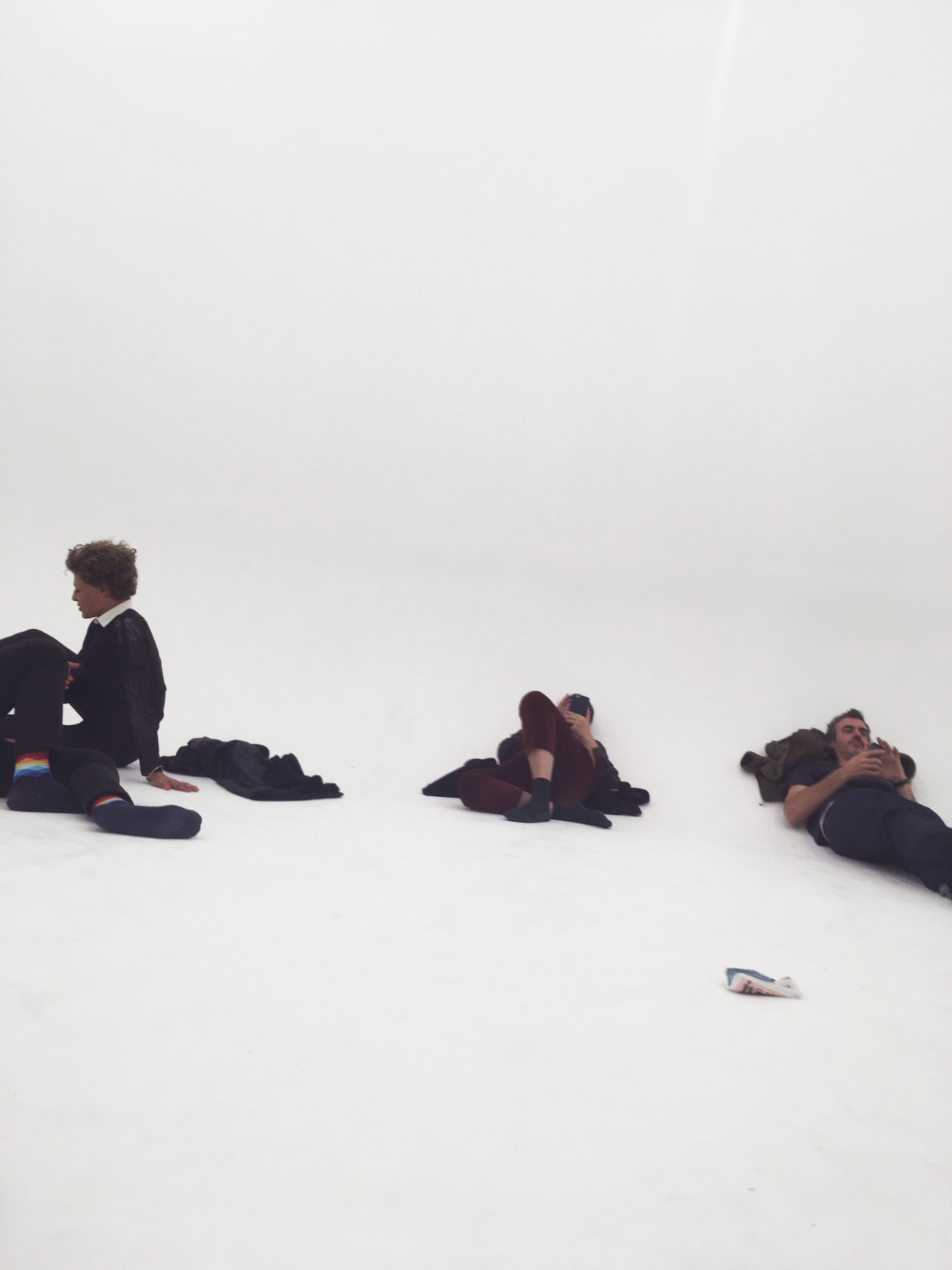Honey-Suckle Company @ ICA London
London just had its Frieze week, but our main reason to visit this city was the opening of Omnibus, an exhibition by the Berlin-based art collective Honey-Suckle Company.
HSC originated in Berlin 1994, a few years after the fall of the wall. To quote a short introduction from the ICA website: ‘Identifying themselves as a movement, built around an ongoing series of fluctuating and ephemeral interventions within the fields of fashion, music and art, the collective emerged from the post-reunification and pre-Internet cultural and social contexts of Berlin, defined by underground techno and squatting scenes. Honey-Suckle Company derive their name and ethos from homoeopath Dr Edward Bach’s honeysuckle flower remedy. According to Bach, the honeysuckle plant’s properties help one to learn from past experiences and re-establish a sense of trust in the future in order to feel grounded in the present. Omnibus and its accompanying programme present Honey-Suckle Company’s work as an evolving communal and holistic methodology, encompassing the group’s clothing, performances, happenings, installations, objects, photographs, music, films and publications. The exhibition spans the past, present and future of Honey-Suckle Company, drawing on their recurring fusion of style, performativity and the spatial environment.’
The group’ s composition has changed over the years and currently consists of: Peter Kišur, Nina Rhode, Simone Gilges, Nico Ihlein, and Lina Launhardt and ongoing collaborators, musicians Eleni Poulou and Konrad Sprenger. Former members are Zille Homma Hamid, Gregor Hylla, Frida Korn/ÜtOrYt, and Fritzi Palme. The credits for all works, with the exception of the music and some guest contributions, go to the collective; HSC doesn’t allow any space for the ego.
Photo: Honey-Suckle Company, ICA, Upper Gallery 2. Photo Jonathan Hordle / PA Wire.


The exhibition consists of 4 rooms, 2 of which are on the ground floor and two upstairs. The largest space downstairs is covered with a thick layer of sand and dimmed lighting, which reminds me of parties in squats that I used to attend myself in The Hague at the end of the nineties. Scenes with life-size dolls forming a band, human-creatures, dressed in a mix of Bauhaus and classical French-looking couture, inhabit the space. With the opening there was a performance held by five HSC members and guests. Together with a large white sheet they formed an iceberg that slowly moved up the sand plateau, into the lamp light, like a melting icecap in the desert. Visually the whole thing referred to photographs from the Eaude series from 2005/2006 that can be seen one floor up. Long vibrating tones in the background made the iceberg retreat again and formed the transition to a concert by Nohe Noshe (Petr Kišur & Eleni Poulou) that took place in the middle of the installation of mannequins and automatically working musical instruments. A report with more background information about the performance and concert can be found here.


A large transparent inflatable cube, Bubble (1995/2019), functions as a kind of filter, through which you can see the adjoining space which, due to the lower ceiling and the brighter lighting, at a distance has the effect of a diorama. In this “box” you get an impression of the activities of the group during the 90’s and the atmosphere around it through (video) installations and a series of collages of, among other things, tape-transformed clothing, documentation material on photo (copy) and used props, exposed behind glass in large frames against the wall.



The exhibition continues on the first floor where, surrounded by the previously mentioned Eaude series, a space-filling installation, Non Est Hic (2006), has been built up that looks as if a giant child just made a hut with large pieces of fabric and old staircases, hanging from and leaning on equally disproportionately large tent poles. At the busy opening I didn’t pay attention to the sound, but I read that “a squawking siren intermittently rears its head from a hidden speaker”.

In the second upper room, with wooden panels a space has been created in the space, Materia Prima (2007). ‘What happens when nothingness is exhibited?’ is a quote I read on an Instagram picture of one of the HSC members referring to it. Through a low entrance gate, blindingly bright light flows out. I enter the space like Alice in Wonderland, into a new world, white, without corners, where there is no distraction from any object. At least, if you are alone.


Somewhere I read another review that concluded that this emptiness would mean the death of a radical potential of ideas that had been reached. As for me, this is an interpretation that is directly opposed to what the group stands for. Omnibus is an overview of 25 years of Honey-Suckle Company, a not insignificant amount of time to stay connected as a collective. In this period each member also individually ran his practice and followed his life path, including events as bearing children, to name one. Honey-Suckle Company is what connects all these lives and perhaps in a way how an ideal society should look like for them.
From nothingness, anything is possible; the future is open.
Omnibus by Honey-Suckle Company runs until January 12th at the ICA London.